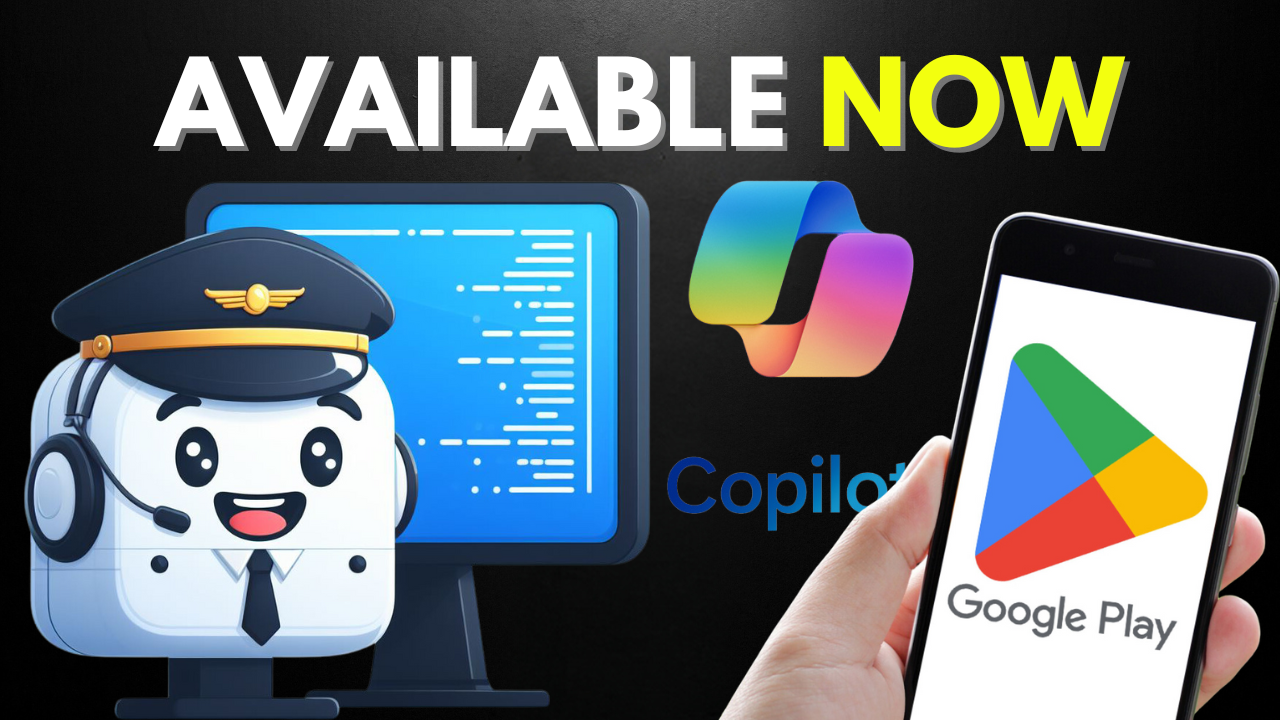
Microsoft’s Copilot: AI on Android NOW
Microsoft has quietly introduced its Copilot AI-Powered Chat Assistant on the Android platform, powered by the state-of-the-art OpenAI models GPT-4 and DALL·E 3. This discreet rollout has brought forth a dynamic application now accessible on the Google Play Store, featuring capabilities that extend beyond conventional chatbots. The Copilot app endeavors to redefine the user experience by offering a broad spectrum of functions, including content generation, email composition, story drafting, and visual creation. This article sheds light on the key nuances of Microsoft’s Copilot, exploring its features, potential expansions, and the impact it could have on the landscape of AI-driven assistance.
Table of Contents
ToggleWhat is Microsoft Copilot?
Microsoft Copilot is an AI-driven chat assistant that leverages OpenAI’s GPT-4 and DALL·E 3 models. Originally a rebranding of Microsoft’s Bing Chat AI, Copilot is designed to provide users with fast, complex, and precise responses, while also offering the ability to create visuals from basic text prompts. It encompasses various functionalities, including drafting emails, composing stories, summarizing texts, translating content, and even optimizing travel itineraries.
Microsoft Copilot Release Date?
The Android version of Microsoft Copilot quietly surfaced on the Google Play Store, with no official announcement from Microsoft. The app is already available for download, and the Play Store listing indicates that the last update occurred on December 19. Meanwhile, rumors suggest that an iOS version is in the works and could potentially be released in 2024, expanding Copilot’s reach to Apple users.
Microsoft Copilot Pricing?
As per the Play Store listing, Microsoft Copilot is currently free to use, implying that users can access its basic features without any cost. However, there is a hint at the possibility of in-app purchases, raising questions about potential premium features or add-ons. The listing does not provide detailed information on any premium offerings, leaving users to explore the app to discover its full range of capabilities.
Key Features and Functionality:
Microsoft Copilot, powered by OpenAI’s latest models, promises users intricate responses and the ability to transform text into stunning visuals through the Image Creator powered by DALL·E 3. The app can be utilized for drafting emails, composing stories or scripts, summarizing complex texts, multilingual content translation, proofreading, optimization, and even creating personalized travel itineraries. The inclusion of AI models GPT-4 and DALL·E 3 further enhances its creative capabilities.
User Experience and Accessibility:
The Copilot app for Android does not mandate a Microsoft account for basic usage. However, signing in with a Microsoft email ID unlocks additional features, facilitating more extended conversations with the chatbot. While the app requests approximate location permission, it is not mandatory. Users can toggle GPT-4 access on or off, with a note that creative processes may be slower when the feature is activated.
Future Prospects:
Though the Android version is currently available, there is speculation about an impending iOS release, with reports suggesting that Microsoft is actively working on it. The potential launch on iOS would further broaden the user base for Copilot, allowing Apple users to access its AI-powered capabilities seamlessly.
Is Microsoft Copilot free?
Free Versions:
Copilot for Windows: Released in September 2023 for Windows 11 updates, it’s completely free for all Windows users. It lets you do things like analyze images, use chatbots, and interact with your computer using your voice.
Microsoft Copilot (formerly Bing Chat): This is a general-purpose chatbot that’s still being tested, and you can use it for free.
Paid Versions:
Copilot for Microsoft 365: If you want features specifically designed for Microsoft 365 applications, you’ll need to pay. It’s $30 per user per month, but if you already have certain Microsoft 365 licenses (like E3, E5, Business Premium, Business Standard, A3, and A5), you might get it for free. It could become available to more users in the future.
So, if you’re just looking for basic AI help in Windows or general chatbot interactions, you’re good to go for free. But if you want the fancy Microsoft 365 features, that comes with a subscription cost.
Conclusion:
Microsoft’s Copilot emerges as a versatile AI assistant, combining the prowess of OpenAI’s advanced models with a range of functionalities catering to diverse user needs. The quiet release on Android hints at Microsoft’s commitment to expanding Copilot’s presence across various platforms, with potential updates and features likely to shape its future trajectory. As users embrace this generative AI assistant, the landscape of AI-powered productivity tools continues to evolve.
Microsoft has quietly introduced its Copilot AI-Powered Chat Assistant on the Android platform, powered by the state-of-the-art OpenAI models GPT-4 and DALL·E 3. This discreet rollout has brought forth a dynamic application now accessible on the Google Play Store, featuring capabilities that extend beyond conventional chatbots. The Copilot app endeavors to redefine the user experience…
Microsoft has quietly introduced its Copilot AI-Powered Chat Assistant on the Android platform, powered by the state-of-the-art OpenAI models GPT-4 and DALL·E 3. This discreet rollout has brought forth a dynamic application now accessible on the Google Play Store, featuring capabilities that extend beyond conventional chatbots. The Copilot app endeavors to redefine the user experience…